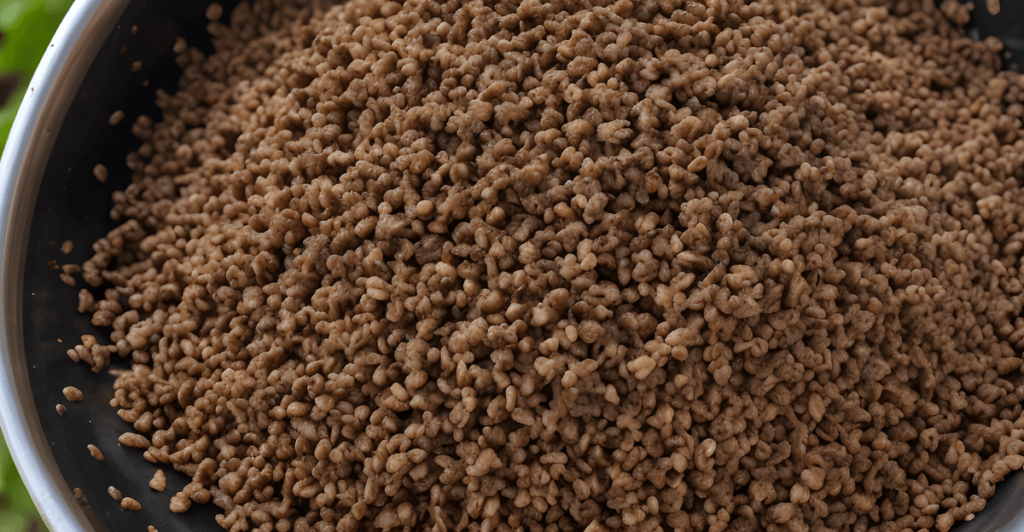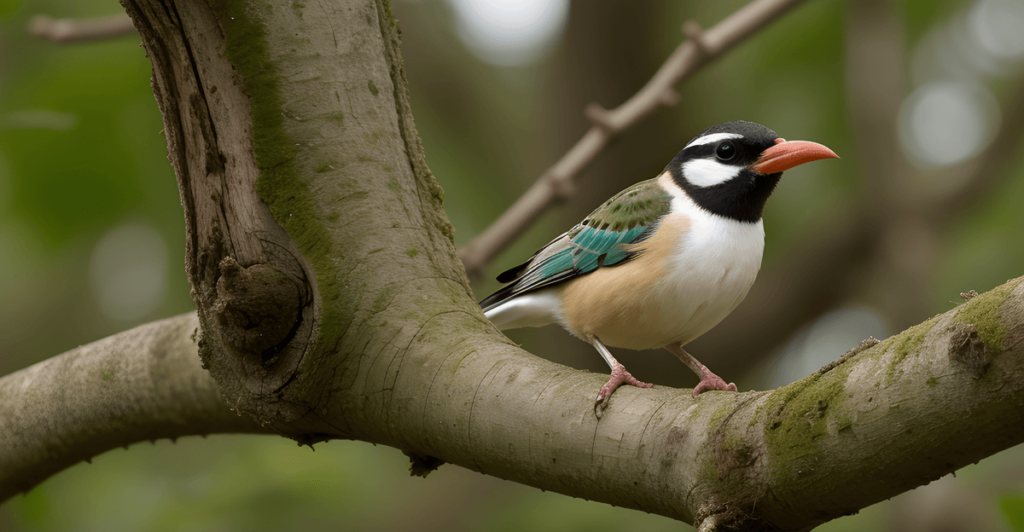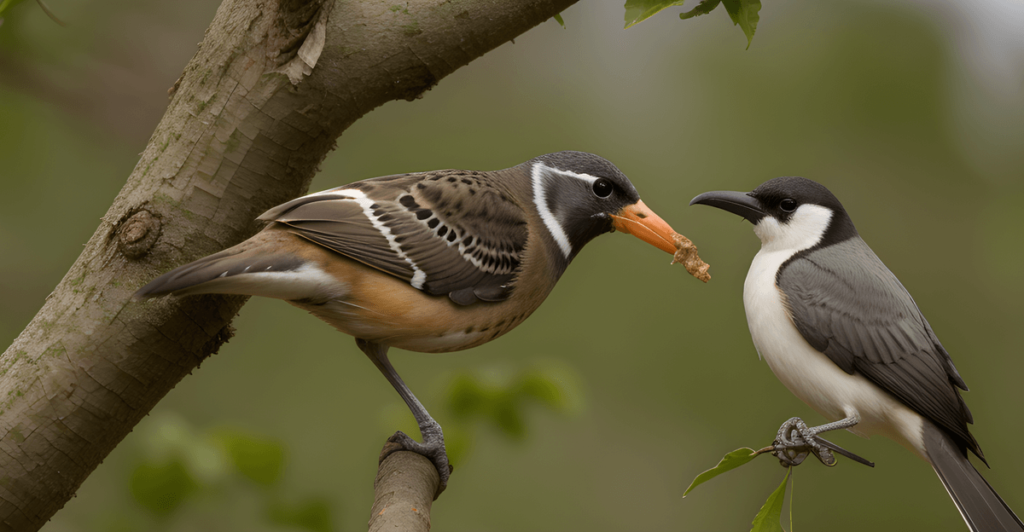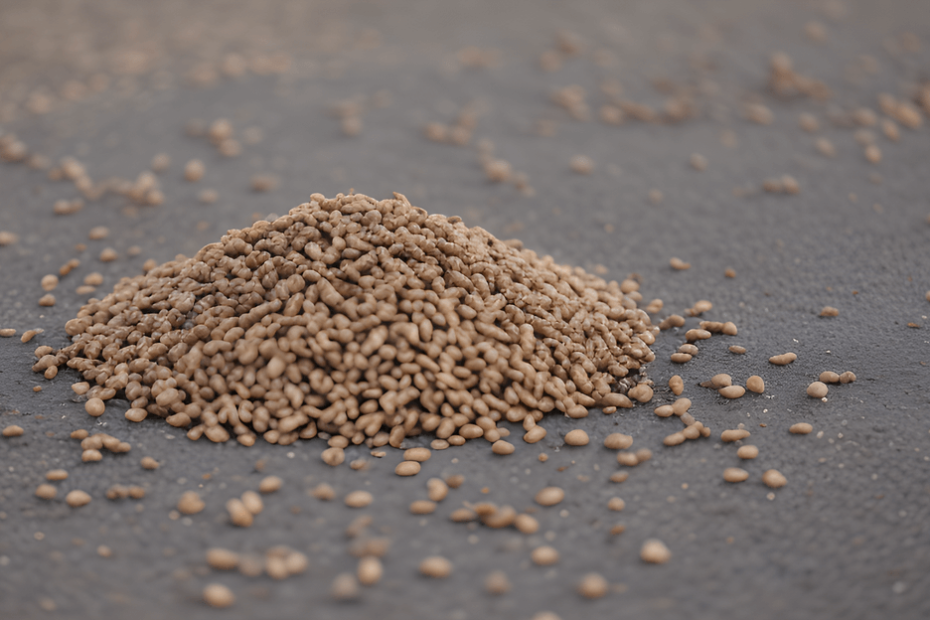Key Takeaways
- Understanding the fasting endurance and survival time of birds can help in appreciating their resilience and adapting conservation efforts.
- Monitoring signs of malnutrition and starvation in birds, such as a balanced diet and good care, can aid in timely intervention and support for their survival.
- Providing proper nutrition and hydration to starving birds can make a significant difference in their ability to endure food scarcity.
- Attracting and feeding birds responsibly in your yard can contribute to their well-being during periods of food scarcity and lean times.
- Conserving energy and coping strategies during food scarcity and lean times are essential for birds to survive without food for extended periods.
- Different bird species, many birds, have varying abilities to go without food, influenced by factors such as metabolism and fat reserves.
Introduction
Curious about the remarkable endurance of our feathered friends? Imagine this: while we humans may feel a bit peckish after missing a meal, birds possess an astonishing ability to survive without food for extended periods. From sparrows to majestic eagles, many birds can endure varying durations without sustenance, showcasing their incredible adaptability and resilience in the wild.
Birds’ capacity to thrive despite prolonged fasting is truly astounding. Whether it’s due to migration, adverse weather conditions, or scarcity of prey, many birds have evolved extraordinary mechanisms for survival. Join me as we delve into the fascinating world of avian biology and discover just how long birds can go without food and water.
Understanding Birds’ Fasting Endurance
Adaptation to Scarcity
Birds have evolved to survive extended periods without food or water, a remarkable adaptation that allows them to endure harsh environmental conditions. This ability is crucial for many birds’ survival in the wild, where food scarcity can be a common occurrence. For example, many bird species can go without food or water for several days during migration when resources are limited.
This endurance has been observed in various environments and climates, showcasing the resilience of different bird species. From arid deserts to frigid tundras, birds have demonstrated their capacity to withstand hunger and thirst during challenging circumstances. Their ability to fast for extended periods enables them to thrive in diverse habitats and ecosystems.
I once learned about how migratory birds travel thousands of miles without regular access to food sources. It’s fascinating how they manage such extraordinary journeys while enduring fasting periods along the way.
Varied Fasting Endurance
The fasting endurance of birds varies significantly among different species. Larger birds like eagles and vultures can survive longer without food compared to smaller songbirds due to their lower metabolic rates and energy conservation strategies. For instance, raptors are known for their exceptional fasting abilities as they can sustain themselves through days or even weeks with minimal or no prey availability.
On the other hand, smaller passerines like warblers may need more frequent nourishment due to their higher metabolic rates and energetic demands associated with activities such as singing complex songs during mating seasons. This variability emphasizes the importance of understanding each species’ unique biological traits and ecological requirements when implementing conservation measures.
I remember reading about how hummingbirds possess one of the highest metabolisms among all animals but still manage impressive fasting endurance during inclement weather or resource shortages.

Conservation Implications
Understanding birds’ fasting endurance is pivotal for effective conservation efforts aimed at preserving avian populations and their habitats. By recognizing which species are more susceptible to prolonged fasting periods, conservationists can develop targeted strategies that address specific challenges faced by these birds.
Moreover, this knowledge aids in identifying critical areas where habitat protection is essential for supporting bird populations during times of food scarcity caused by natural phenomena or human-induced disturbances. By considering factors such as migration routes and wintering grounds where birds experience prolonged fasting periods, conservation initiatives can be tailored accordingly.
How Long Can Birds Go Without Food? Impact of Metabolism and Fat Reserves on Survival
Role of Metabolism
Birds’ metabolism is a crucial factor that determines how long they can survive without food. A high metabolism means the bird’s body processes energy at a faster rate, requiring more frequent feeding to sustain itself. On the other hand, birds with lower metabolisms are better equipped to endure longer periods without food.
Metabolism affects how efficiently birds utilize their fat reserves during times of scarcity. When food becomes scarce, birds with higher metabolisms deplete their fat stores more rapidly as their bodies burn through energy at an accelerated pace. In contrast, species with slower metabolisms can conserve fat reserves for extended periods.
Importance of Fat Reserves
During fasting periods, fat reserves serve as a vital source of energy for birds. These reserves allow them to maintain essential bodily functions such as regulating body temperature and sustaining overall health when food is unavailable. For example, migratory birds rely heavily on accumulated fat stores to fuel their long journeys across continents.
The ability to survive without food largely depends on the amount of body fat a bird possesses and its metabolic rate. Species known for their endurance in fasting conditions often have remarkable adaptations that enable them to store significant amounts of fat for sustenance during challenging times.
Examples from Nature
Some bird species exhibit exceptional survival capabilities in the face of prolonged fasting conditions due to their unique physiological traits and behaviors. For instance:
- The common swift is known for spending almost its entire life in flight and can go months without landing or eating.
- Emperor penguins endure weeks or even months without nourishment while breeding in Antarctica.
- Hummingbirds enter a state called torpor each night where they drastically reduce their metabolic rate to conserve energy until dawn.
Understanding these examples sheds light on how different avian species have evolved diverse strategies for coping with limited access to food resources based on variations in metabolism and fat storage capacity.
Signs of Malnutrition and Starvation in Birds
Physical Signs
Birds that have gone without food for an extended period may display visible physical changes. These can include a noticeable decrease in body weight, as well as a reduction in muscle mass. Their feathers might appear dull or unkempt due to the lack of essential nutrients required for healthy plumage.
Furthermore, you may observe that the bird’s keel bone becomes more prominent. This is because when birds are deprived of food, their bodies start using up fat reserves stored around this bone area to sustain themselves. As a result, the keel bone becomes more pronounced and easier to feel through the skin.
Sometimes, birds experiencing starvation might also exhibit signs such as weakness or lethargy. They may move less frequently and become visibly feeble due to the depletion of energy reserves within their bodies.

Behavioral Changes
In addition to physical alterations, behavioral changes can be indicative of malnutrition and starvation in birds. For instance, you might notice a decrease in activity levels; they could become less vocal or show disinterest in their surroundings.
Moreover, some birds may resort to unusual behaviors such as consuming non-edible items like soil or gravel due to hunger-induced distress. This behavior is known as pica and is often observed when animals are starving.
It’s important not only to recognize these signs but also understand that different species of birds may exhibit unique indicators based on their specific dietary requirements and metabolic rates.
I remember once finding an injured sparrow near my house displaying several symptoms mentioned above – it looked weak with ruffled feathers and was barely moving. After providing it with some seeds and water over a few hours, I noticed improvements in its energy levels which made me realize how crucial timely intervention is for these situations.
Importance of Timely Intervention
Identifying signs of malnutrition early on allows for prompt intervention aimed at restoring the bird’s health. Providing appropriate nutrition promptly helps prevent further deterioration caused by prolonged deprivation.
Timely intervention can involve offering suitable foods rich in essential nutrients such as carbohydrates, proteins, fats, vitamins (especially vitamin A), and minerals like calcium and phosphorus – all vital components necessary for maintaining overall health.
Coping Strategies During Food Scarcity for Birds
Reducing Activity Levels
Food scarcity can force birds to reduce their activity levels. When food becomes scarce, birds may conserve energy by moving less and spending more time resting. This helps them survive longer without food.
During times of food scarcity, birds like sparrows or finches may be observed perching quietly for long periods instead of actively foraging. By minimizing movement, they can conserve the energy reserves in their bodies, allowing them to endure longer periods without sustenance.
When I was observing a group of wild sparrows during a particularly harsh winter, I noticed that they spent most of their time perched on branches rather than flying around or searching for food. It was fascinating to see how these small creatures instinctively adjusted their behavior to cope with the lack of food.
Migration to Areas with Better Food Availability
Some bird species have evolved the ability to migrate when faced with food scarcity in their current habitat. They travel hundreds or thousands of miles in search of areas where resources are more abundant, ensuring their survival during lean times.
For example, Arctic Terns migrate from the Arctic region down to Antarctica and back each year as part of their natural life cycle. This journey allows them access to plentiful food sources throughout different seasons and prevents them from experiencing prolonged periods without sustenance.
Learning about these coping strategies is crucial not only for understanding bird behavior but also for formulating effective conservation plans aimed at protecting vulnerable bird populations during times of food scarcity.
Understanding how birds adapt and survive through various coping mechanisms provides valuable insights into developing measures that can help mitigate the impacts of human activities on bird habitats and support sustainable ecosystems.
Conserving Energy in Birds During Food Scarcity
Energy Conservation
Birds conserve energy by minimizing non-essential activities when food scarcity strikes. This means they reduce unnecessary movements and behaviors to save energy for essential functions. For example, during lean times, birds may spend less time singing or engaging in territorial disputes to conserve energy reserves.
When food is scarce, energy conservation becomes crucial for birds’ survival. By reducing their activity levels, birds can endure longer periods without food. This strategy allows them to maintain their vital bodily functions while waiting for the next opportunity to find nourishment.
During times of scarcity, such as harsh winters or droughts, many bird species adjust their behavior to minimize stress on their bodies due to lack of food availability. They may also reduce the frequency of flights and limit unnecessary movements within their habitats.

Vital Survival Strategy
Conserving energy is a vital survival strategy for birds facing food shortages. It enables them to rely on existing energy reserves while seeking out new sources of sustenance. By conserving energy during lean times, birds increase their chances of surviving until conditions improve and food becomes more readily available again.
Some bird species enter a state known as torpor during periods of extreme food scarcity. Torpor is a temporary reduction in body temperature and metabolic rate that helps birds save significant amounts of energy when resources are limited.
I remember observing sparrows outside my window during a particularly cold winter week when there was little natural food available due to heavy snowfall. The sparrows seemed less active than usual and spent most of their time perched together in sheltered spots instead of flying around searching for food.
Factors Affecting a Bird’s Day Without Food
Species and Size
Many factors, such as species and size, play a role in determining how long a bird can survive without food. For instance, smaller birds generally have faster metabolisms, needing to eat more frequently than larger birds. Each species has adapted differently to environmental conditions, affecting their ability to endure periods of fasting.
Birds like hummingbirds, with their rapid metabolism due to small size, need to feed every 10-15 minutes during the day; whereas larger birds such as geese can go for weeks without eating due to their slower metabolic rate.
Understanding these distinctions is crucial for comprehending the diverse survival strategies developed by different bird species over time.
Environmental Conditions and Temperatures
The temperatures and other environmental conditions also significantly impact how long a bird can go without food. In colder weather, birds require more energy to maintain body heat. This means they need more frequent meals compared to warmer climates where they may be able to sustain themselves for longer periods.
For example, during winter months when food sources are scarce and temperatures drop significantly, some bird species enter a state of torpor—a temporary decrease in metabolic rate—allowing them to conserve energy and survive prolonged periods without food.
I remember observing sparrows fluff up their feathers on cold days; this behavior helps them trap air close to their bodies for insulation against the cold weather. It’s fascinating how these small adjustments aid in their survival during harsh conditions!
How Long Can Different Bird Species Go Without Food?
Varying Abilities
Many birds have the remarkable ability to survive extended periods without food. This duration varies widely among different species, with some being able to endure longer fasts than others. Larger birds, such as eagles and vultures, can generally go for longer periods without eating compared to smaller bird species.
Birds’ unique physiological and behavioral adaptations play a crucial role in determining their fasting limits. For example, some bird species have the ability to enter a state of torpor, significantly reducing their metabolic rate and conserving energy during times of food scarcity. Understanding these variations is essential for wildlife management and rehabilitation efforts.
Factors Affecting Fasting Limits
The length of time a bird can survive without food depends on various factors, including its size, metabolism, available fat reserves, environmental conditions, and seasonal changes in food availability. Larger birds tend to have greater fat reserves that enable them to sustain themselves for longer periods when food is scarce.
Some long-distance migratory birds undergo remarkable feats by flying thousands of miles without feeding. These incredible journeys require careful energy conservation strategies and efficient use of stored body fat. The ability of certain bird species to lower their body temperature during cold weather helps them conserve energy and endure prolonged fasting periods.
I remember learning about how different bird species adapt based on their environment’s conditions during my visit to a wildlife sanctuary last year. It was fascinating to see firsthand how these adaptations allow them not only to survive but also thrive in challenging environments.
Supporting Starving Birds with Proper Nutrition and Hydration
Importance of Nutrition and Hydration
Proper nutrition and hydration play a crucial role in supporting starving birds. Offering suitable feeding options can aid in the recovery of malnourished birds, ensuring their well-being when facing food shortages. When birds are deprived of food for an extended period, it affects their overall health, making them more susceptible to illnesses.
Birds need a balanced diet to maintain their body weight and energy levels. Without enough water or food sources, they become weak and may not be able to fly or hunt effectively. In such cases, providing clean water is essential for their survival as dehydration can lead to death.
When baby birds are abandoned by their parents or cannot find enough food on their own, it’s important to step in and offer the necessary sustenance. This includes understanding the specific dietary needs of different bird species and providing appropriate nourishment accordingly.
Feeding Options for Starving Birds
In situations where birds are struggling to find sufficient food sources, offering alternatives becomes imperative. Providing small animals like insects or worms can serve as an excellent source of nutrition for certain bird species. Setting up feeders with seeds or nuts can attract local bird populations that might be experiencing a shortage of natural food.
It’s vital to research the dietary requirements of specific bird species before offering any type of supplemental feeding. For instance, some birds may require a higher protein intake while others might thrive on a diet rich in fruits and berries.
As someone who has cared for rescued baby birds myself, I’ve learned that creating a safe environment within a cage allows these vulnerable creatures to regain strength without feeling threatened by predators or other dangers outdoors.
Ensuring Well-being through Good Care
In addition to providing adequate nutrition and hydration, good care is essential when supporting starving birds. This involves creating an environment that mimics their natural habitat as closely as possible while minimizing stress factors such as loud noises or excessive handling.
For female birds during nesting season, having access to abundant food sources is crucial for producing healthy eggs and caring for offspring once they hatch. Researchers have found that females who lack proper nutrition may produce fewer eggs with thinner shells which could impact the survival rates of future generations.
Attracting and Feeding Birds Responsibly in Your Yard
The Resilience of Birds
Birds have an incredible ability to survive without food for varying periods. In general, smaller birds can usually go without food for about 24 hours, while larger birds may be able to last several days without eating. This remarkable resilience is a result of their efficient metabolism and the ability to conserve energy when necessary.
In times of scarcity, birds have evolved to adapt and endure extended periods without nourishment. When there are changes in their environment or if they’re unable to find sufficient food, birds can rely on stored fat reserves as a source of energy. This adaptive mechanism allows them to sustain themselves until they find their next meal.
Impact of Responsible Feeding
Responsible feeding practices play a crucial role in supporting the well-being of our feathered friends. By offering seeds, fruits, or specialized bird feed in designated areas within your yard, you contribute significantly to the health and safety of visiting birds. This responsible act not only provides essential nutrition but also ensures that the avian visitors do not needlessly expend valuable energy searching for sustenance.
Creating a bird-friendly environment through responsible feeding practices has broader positive implications beyond individual bird welfare. It contributes to maintaining the overall balance within the ecosystem in your yard by attracting diverse species and promoting biodiversity. As more birds are attracted due to proper nourishment availability, natural pest control is enhanced and plant pollination increases.
I’ve found that placing multiple feeders at different heights attracts various types of birds—some prefer feeding from elevated positions while others feel safer closer to the ground level.
Final Remarks
After exploring the remarkable endurance of birds during food scarcity, it’s clear that these resilient creatures have evolved various coping strategies to survive. Understanding the impact of metabolism, fat reserves, and energy conservation on their ability to endure fasting periods sheds light on the incredible adaptability of different bird species. Recognizing the signs of malnutrition and starvation in birds equips us to support them responsibly, ensuring proper nutrition and hydration when needed. By attracting and feeding birds in our yards, we can play a vital role in aiding their survival during challenging times.
As we observe these fascinating behaviors in birds, let’s remember to provide a helping hand by offering suitable food sources and maintaining clean water stations. Together, we can create an environment that supports the well-being of our feathered friends, contributing to the preservation of diverse bird populations for generations to come.
Frequently Asked Questions
How does a bird’s metabolism and fat reserves affect its ability to survive without food?
A bird’s metabolism and fat reserves play a crucial role in its survival during food scarcity. Birds with higher metabolic rates or larger fat stores can endure longer periods without food compared to those with lower metabolic rates or limited fat reserves.
What are the signs of malnutrition and starvation in birds?
Signs of malnutrition and starvation in birds may include weight loss, lethargy, weakened immune system leading to susceptibility to diseases, reduced activity levels, and changes in plumage condition. It’s essential to monitor these signs for early intervention.
What are some coping strategies that birds use during food scarcity?
During food scarcity, birds employ various coping strategies such as reducing their activity levels, seeking alternative sources of nutrition like fruits or insects, modifying foraging behavior, and even migrating to areas with better feeding opportunities.
How long can different bird species go without food?
The duration a bird species can survive without food varies widely based on factors like body size, metabolic rate, environmental conditions, and available fat reserves. Some smaller species may only last a day or two while larger migratory birds might endure several weeks.
How can individuals support starving birds with proper nutrition and hydration?
Providing appropriate bird feeders stocked with suitable seeds or suet cakes along with clean water sources can offer vital support for starving birds. Creating a bird-friendly environment by planting native vegetation will attract insects that serve as natural nutrition sources for the birds.
